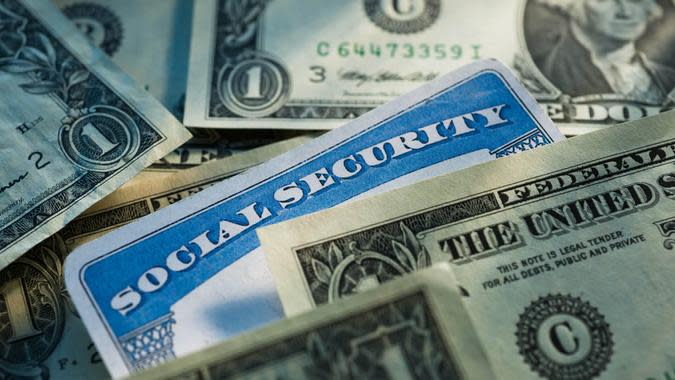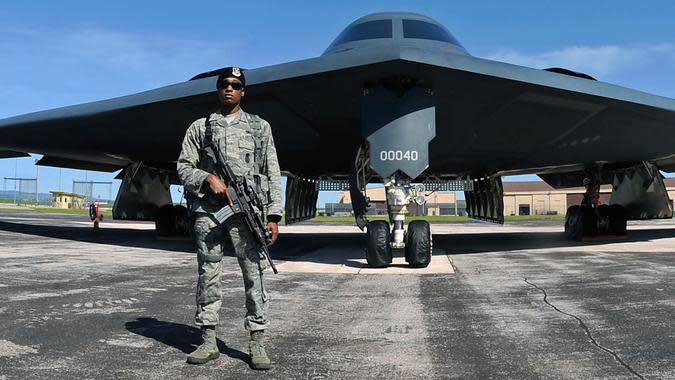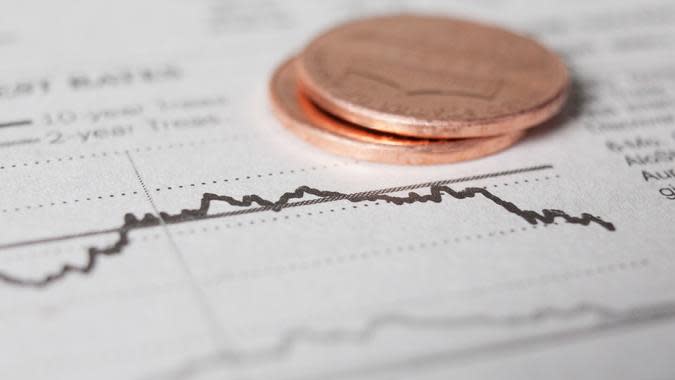This Is Where Your Tax Dollars Actually Go

The U.S. is expected to bring in close to $3.74 trillion in tax revenue in 2022, according to Congressional Budget Office (CBO) projections. About half of that comes from individual income taxes and one-third comes from payroll taxes, which include Social Security and Medicare taxes.
Did You Know: Here’s the Average IRS Tax Refund Amount
Find Out: What To Do When You Can’t Pay Your Tax Bill
That's right -- it's your tax dollars that keep the federal government running. So you might be wondering, "Where does tax money go?" To find out, GOBankingRates looked over CBO projections for 2022. The results show an increase in revenue of nearly $500 billion over 2021, when the country was still playing catch-up from the effects of the pandemic the year before when widespread unemployment was the norm for much of the year.
Find out which programs your tax dollars are funding.
Last updated: Oct. 14, 2021

The Federal Budget
Federal spending is projected to be close to $5.08 trillion for fiscal year 2022, according to the CBO. With tax revenue expected to be less than $3.74 trillion, that means there will be a deficit of $1.34 trillion. In a rarity that reveals just how consequential 2020 was, the government actually spent less in 2021 than it did the year before.
See: 10 Tax Loopholes That Could Save You Thousands

Social Security
Gobbling up nearly one dollar in four, Social Security benefits are the biggest single expenditure in the federal budget. The U.S. is expected to pay out more than $1.2 trillion to the program in 2022 in the form of old-age, survivors and disability benefits.
Social Security is funded through a 6.2% payroll tax that workers pay and another 6.2% that employers pay. Self-employed people have to pay the full 12.4%. However, because the number of adults 65 and older is expected to increase dramatically by 2035, Social Security tax revenues will cover only about 75% of benefits, according to the Social Security Administration.
Read More: Most Popular Things To Do With Your Tax Refund — and How To Do It Smarter

Medicare
The second-biggest mandatory spending outlay and the No. 2 budget expenditure in general is Medicare, which is expected to cost $973 billion in 2022. This federal program provides health insurance coverage for adults 65 and older.
Medicare is funded by a payroll tax of 2.9% paid by employees and employers. Each pays 1.45% of an employee's income. It's also funded by general revenues and premiums paid by Medicare recipients.

Defense
CBO data show that the federal government is projected to spend $765 billion on defense in 2022. That's a little more than half of the combined $1.45 trillion set aside for federal discretionary spending. Defense spending actually dropped a little in 2021 compared to 2020, but discretionary spending as a whole soared thanks to virus-relief costs.

Medicaid
About 10% of the federal budget goes toward Medicaid. In 2022, spending on this joint federal-state health insurance program for low-income people is expected to be $516 billion. Social Security, Medicare, and Medicaid form the bedrock of America's social safety net, but the federal government also funds the Children's Health Insurance Program (CHIP) for children of low-income families and health insurance premium subsidies for the Affordable Care Act. Combined, funding for these two health programs will be $70 billion in 2022.
Take the Quiz: Are You Filing Your Taxes Correctly?

Income Security Programs
In 2022, about $386 billion will be spent on income security programs like unemployment compensation, earned income tax credits, child nutrition programs and the Supplemental Nutrition Assistance Program (SNAP).
That's a big drop from the $499 billion that was spent last year, but even that is peanuts compared to the more than $1.13 trillion the federal government was forced to spend on income security programs in 2020.

Federal Civilian and Military Retirement
Funding for retirement benefits for federal civilian workers and military members makes up less than 5% of the budget. The CBO projects that the federal government will spend $189 billion on these retirement benefits in 2022.

Veterans Programs
Veterans programs account for 2% of the federal budget. The government is expected to spend $147 billion in 2022 on compensation, pension, life insurance and other programs for veterans
Whoa: Jaw-Dropping Stats About the State of Retirement in America

Agriculture and Other Programs
Less than 2% of the budget -- $105 billion in 2022 -- goes to agriculture programs, mortgage service providers Fannie Mae and Freddie Mac, deposit insurance, higher education, and other government services. In 2020, this family of "other programs" got a new addition: the Coronavirus Relief Fund. That, along with a huge increase in Small Business Administration (SBA) funding, caused this kind of spending to balloon nearly tenfold in 2020 to $969 billion before dropping off to $100 billion last year.

Interest on Debt
Last but not least, the U.S. has a lot of debt, and, yes, your tax dollars are going toward the repayment of this debt. At the end of 2019, the U.S. held about $16.8 trillion in debt, a number that had been slowly and steadily creeping up for years. By the end of 2020, however, slow and steady were things of the past. America's COVID-related borrowing and spending frenzy bumped that number up to $23.32 trillion, which is the amount of debt taxpayers will be grappling with in 2022.
More From GOBankingRates
Fourth Stimulus Checks Are Coming From These States — Is Yours on the List?
Here’s How Much You Need To Earn To Be ‘Rich’ in 23 Major Countries Around the World
Cameron Huddleston contributed to the reporting for this article.
This article originally appeared on GOBankingRates.com: This Is Where Your Tax Dollars Actually Go

 Yahoo Finance
Yahoo Finance 